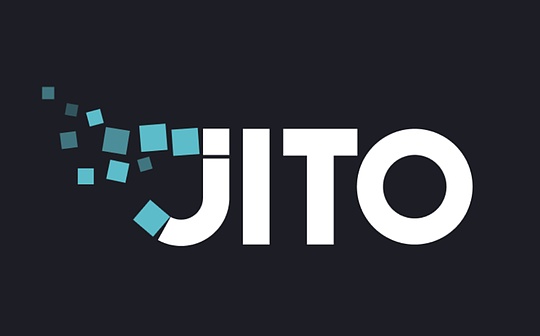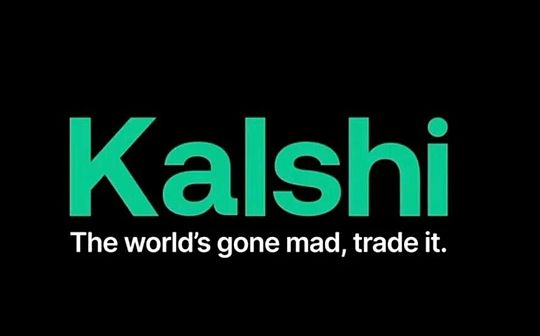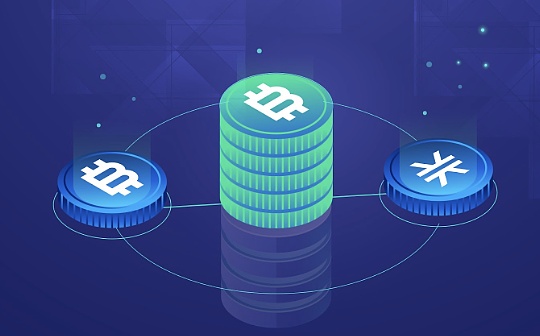
Author: Snow Translator: Paine
Key points of the report
Restaking is a mechanism to increase yields by freeing liquidity and increasing leverage, mainly based on Ethereum’s security framework.Although it can provide additional benefits to the pledger and improve the efficiency of capital use, it also brings a range of risks, including confiscation, liquidity, centralization, contract and smart contract risks.EigenLayer is a pioneer in this field, but with the addition of more competitors such as Symbiotic, Karak Network, Babylon, BounceBit and Solayer, the market funds are dispersed and more challenges may be faced in the future.Users should carefully consider the risks and benefits of participating in the replenishment agreement, and configure corresponding contract monitoring to ensure asset security.
background
Pledge and liquid pledge
Ethereum staking refers to users locking their ETH into the Ethereum network to support the operation and security of the network.In Ethereum 2.0, this staking mechanism is part of the Proof of Stake (PoS) consensus algorithm, replacing the previous proof of work (PoW) mechanism.Stakers become validators through staking ETH, participating in the creation and confirmation of blocks, and in return, they can receive staking rewards.
Liquid staking derivatives (LSD) were born to solve the liquidity problem in traditional staking.It allows users to obtain liquid tokens representing their staked shares (such as Lido’s stETH or Rocket Pool’s rETH) while pledging tokens.These liquid tokens can be traded, borrowed or used for other financial activities on other platforms, and can not only participate in pledge to receive rewards, but also maintain fund flexibility.
Trust network breaks
Since its inception, the Bitcoin network has introduced the concept of decentralized trust and designed to be a peer-to-peer digital currency system based on UTXO and scripting languages.But its ability to build various applications on the network is limited.Later, Ethereum allows developers to build license-free decentralized applications (DApps) on their consensus layer through the concept of highly programmable virtual machines (EVMs) and modular blockchains, for all DApps built on them.Provides trust and security.But there are still many protocols or middleware that fail to fully utilize Ethereum’s trust network.
For example, Rollup effectively improves Ethereum’s performance by separating transaction execution from EVM and returning only to Ethereum when transactions are settled.But these transactions are not deployed and verified on EVM, so they cannot rely entirely on Ethereum’s trust network.In addition to Rollup, other systems such as sidechains, data availability layers, new virtual machines, oracles and cross-chain bridges based on the new consensus protocol also face similar challenges, and all need to establish their own trust layer to ensure security and prevent malicious intentions.behavior, i.e. Active Verification Service (AVS).
Fluidity splitting
As the largest proof of stake (PoS) blockchain, many projects rely on stake to ensure their security, such as cross-chain bridges, oracles, data availability layer, and zero-knowledge proofs.Therefore, whenever a new project goes online, users must lock in a certain amount of funds, which will lead to a limited pool of funds competing for different projects.As the pledge yields provided by different projects continue to rise, the risks borne by the projects themselves also increase accordingly, forming a vicious cycle.On the other hand, users can only pledge limited funds to limited projects and obtain limited returns, resulting in a low capital utilization rate.With the increase in public chains, applications and various projects, liquidity is becoming increasingly fragmented.
Market demand for pledge services
With the passage of Bitcoin spot ETFs and the successful upgrade of Ethereum Cancun, Ethereum has been revitalized.As of July 15, 2024, more than US$111 billion of Ethereum (ETH) was pledged, accounting for 28% of the total supply.The amount of ETH staked is called Ethereum’s “security budget” because these assets are penalized by the network when they occur in double spend attacks and other violations of protocol rules.Users who stake ETH contribute to enhancing Ethereum’s security, receiving rewards through protocol issuance, priority prompts, and MEVs.Users can easily pledge ETH through the liquid staking pool without sacrificing the liquidity of their assets, which leads to an increasing demand for pledge.
Against this background, the market demand for shared security has emerged, and a platform is needed to use the assets pledged by users to ensure the security of multiple projects. This is the background of the emergence of restaking (Restaking).
What is re-pled
Nowadays, the method of expanding blockchain in modular ways has led to the birth of many new protocols and support middleware.However, each network needs to establish its own security mechanism, often using a variant of Proof of Stake (PoS) consensus, but such practices can result in each security pool becoming an isolated individual.
Re-staking is a process of using the economic and computing resources of one blockchain to protect multiple blockchains.In PoS blockchain, re-staking allows the staking weights and validator set of one chain to be used on any number of other chains.The liquid staking tokens that have been pledged on Ethereum will be re-staked by validators of other blockchains to gain more benefits and improve the security and decentralized features of the new network.The result is a more unified and efficient security system that can be shared by multiple blockchain ecosystems.This concept extends Ethereum’s existing economic trust to protecting other distributed systems such as oracles, bridges, or sidechains.
The concept of restaking has been around in the industry for many years, and the Polkadot ecosystem has tried it in 2020.Cosmos launched a restaking model called “Copy Security” in May 2023; in June of the same year, Ethereum introduced a similar model through EigenLayer.The main value of the re-staking protocol comes from the pledged funds locked on Ethereum, which makes Ethereum, as a PoS blockchain, economically with the highest security.
An important difference between the re-staking mechanism and liquid staking is that although both mechanisms can help ETH pledged on Ethereum to obtain more benefits, the re-staking mechanism completely follows the trust consensus of the pledge mechanism and expands it., enabling validators to make trusted commitments for more applications, infrastructure or distributed networks, thereby improving the overall economic security of the Ethereum ecosystem.
How to replenish
The core of re-staking is to use liquid staking token assets to be used to pledge validators of other blockchains, and while obtaining more benefits, a shared security pool is established to improve the security and decentralization of the new network.Specifically, liquid staking tokens (LST) represent tokenized forms of pledged ETH and cumulative rewards, while liquid restaking tokens (LRT) represent tokenized forms of restaking ETH and cumulative rewards.Restaking is based on Ethereum’s security framework and aims to optimize the efficiency of capital utilization in the cryptocurrency ecosystem.Stakers can not only support the security of one network, but also provide verification services to multiple networks, thereby obtaining additional rewards.
The main problem facing re-pled remains liquidity.Similar to PoS staking, the re-staking assets are locked in the node, resulting in limited liquidity.To solve this problem, Liquid Restaked Token (LRT) was introduced.LRT is a synthetic token issued for restaking ETH or other LST, used by multiple active verification services (AVS) to ensure the security of applications and networks and allocate multiple different types of additional rewards.It enables pledged assets to provide secure support across multiple services while bringing additional rewards and rewards to pledgers.Therefore, although there are some detailed risks in the re-staking process, it brings important liquidity and benefits to the pledgers and DeFi.
Track analysis
Competition Project
EigenLayer
EigenLayer is a leader in the re-staking field and currently has no direct competitor to scale.As an innovative concept, there are relatively few direct competitors in the market.However, EigenLayer may face the following potential competition and challenges:
Other LSD protocols may develop their own restaking features, such as Lido Finance and Rocket Pool.
Other data availability and governance service agreements may develop their own LSD features, such as The Graph and Aragon.
Other Layer 2 or cross-chain protocols may develop their own security and trust networks, such as Polygon and Cosmos.
Since EigenLayer mainly uses LSD as collateral, LSDFi projects on the market may also compete for LSD’s market share.
Karak Network
Karak Network operates similar to the EigenLayer protocol, but its AVS service is called Distributed Security Services (DSS) and has launched its own Layer 2 network K2.Unlike EigenLayer, Karak aims to support re-staking of any asset. The re-staking assets currently supported on the platform include ETH, various LST and LRT assets, as well as stablecoins such as USDT, USDC, DAI and USDe.In addition, Karak has been deployed on Ethereum, Arbitrum, BSC, Blast and Mantle, and users can choose to re-stake according to their own asset distribution.
Babylon
Babylon is a Bitcoin-based re-staking protocol that introduces staking functionality for Bitcoin, allowing BTC holders to stake their assets into other protocols or services that require security and trust, from which PoS staking benefits and governanceright.Babylon covers two aspects: First, BTC holders can pledge BTC, provide security and credibility for other protocols, and earn benefits from it; second, new protocols in the PoS chain or Bitcoin ecosystem can leverage BTC pledgeAs verification nodes, it improves security and efficiency.
Solayer
Solayer is the re-staking agreement of the Solana ecosystem, which supports SOL holders to pledge their assets to protocols or DApp services that require security and trust within the Solana ecosystem to obtain more PoS staking income.Solayer has completed a builder round, with investors including Anatoly Yakovenko, co-founder of Solana Labs, Rooter, Solend founder, Richard Wu, co-founder of Tensor, Sandeep Nailwal, co-founder of Polygon, and others.Solayer supports users to deposit native SOL, mSOL, JitoSOL and other assets.As of July 15, 2024, the total locked value (TVL) on the Solayer platform exceeded US$105 million, of which SOL accounts for about 60%.
Picasso
Picasso is a universal restaken blockchain built on the Cosmos SDK.It connects the underlying chain through the IBC protocol and processes the details of the deposited assets, and then allocates the funds to the AVS.Picasso’s restaking solution is similar to EigenLayer, which allows subsets in the network to join to protect AVS weights.This architecture has been copied on multiple basic chains and unified on Picasso.Picasso’s node operator is selected by the governance mechanism.Currently, Picasso’s re-staking layer only accepts assets and native SOL deposits from Solana through SOL LST as re-staking collateral.Picasso’s roadmap plans to expand to the Cosmos chain and other assets after launching AVS on Solana.Currently, re-staking products supported on Picasso include LST assets such as SOL, JitoSOL, mSOL and bSOL.
General re-staking agreement
General re-staking is a system that can centrally re-staking native assets on multiple chains.This method has nothing to do with specific assets and the underlying chain, allowing many pledged assets to be concentrated across multiple chains.General restaking depends on an additional layer between the economic security source chain and the AVS or a series of contracts across multiple blockchains.
Summary
The re-pled field is currently developing rapidly.Although EigenLayer is a pioneer in this field, more and more competitors and innovators are joining, constantly expanding the application scenarios and technological boundaries of re-staking.Re-staking not only brings new revenue models, but also promotes the progress of security and liquidity of the blockchain ecosystem.
Market size
According to DeFiLlama, the total locked value of the global ETH liquidity staking market as of July 21, 2024 was US$47.599 billion.Lido is the largest player among them, with a locked value of up to 72.31%.Lido provides a liquid staking solution that allows users to stake ETH to the Ethereum 2.0 network and obtain equivalent stETH tokens that can be used or staked again in the DeFi market.The main restaking agreements include EigenLayer and Tenet.

Source: https://defilama.com/lsd
As of June 25, 2024, the total locked asset value in the global replenishment market reached US$20.14 billion.Currently, most of the re-staking agreements are deployed on the Ethereum chain, and the total lock-in amount of ETH and derivative assets of its re-staking reached US$19.4 billion; in addition, the re-staking agreements on the Solana chain, such as Picasso and Solayer, pledged US$58.5 million worth of US$58.5 million through the re-staking agreements on the Solana chain, such as Picasso and Solayer.Assets; pledged another $223.3 million in BTC on various chains (including Bitlayer, Merlin, BSC, etc.).
The chart below shows the total locked value of restaking assets for leading restaking solutions (EigenLayer, Karak, Symbiotic, Solayer, Picasso and Pell Network) calculated at total locked value.Overall, the total amount of replenished assets exceeded $20 billion.Most of the ETH and ETH LSTs that are re-staked locally. Calculated by TVL, the first three categories of re-staked assets are centered on ETH.
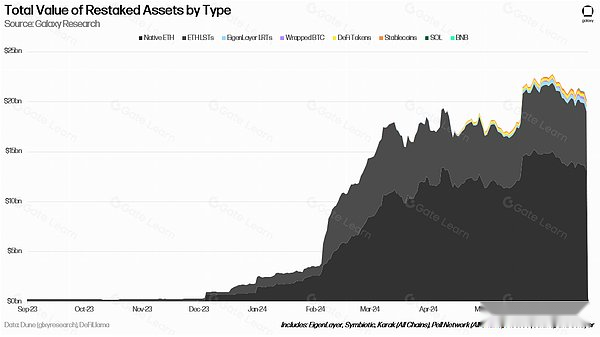
Source: https://x.com/ZackPokorny_
Core competitive factors
Asset size
The asset scale is the total amount of pledge in the pledge platform.A high-quality pledge platform should have large-scale assets to demonstrate its stability and credibility.For example, EigenLayer currently pledges 5,842,593 Ethereums, with a total TVL of more than US$18 billion, becoming the largest agreement in the re-staking field.

Source: https://dune.com/hahahash/eigenlayer
Rate of return
-
Re-staking projects should provide higher yields than single pledges to attract users to participate.To this end, it is necessary to optimize the pledge strategy, reasonably allocate income and rewards, and use compound interest effects and other methods to improve the capital efficiency and return rate of users.For example, the re-staking plan proposed by Eigenlayer, liquid tokens can also obtain profits in other cross-chain bridges, oracles, LP staking, etc.
-
Staking Ethereum earnings.Such as stETH obtained through liquidity staking agreements such as Lido;
-
Token rewards for node construction and verification by partner project parties;
-
Liquidity Token pledges the LP rewards of DeFi.
Liquidity
Re-pled projects need to solve the liquidity problem of pledged assets, allowing users to easily join or exit pledge, or transfer assets to other agreements or platforms.Therefore, it is necessary to provide services such as liquid staking tokens, liquidity mining and lending markets to enhance user liquidity and flexibility.
Security
Protecting the security of user assets is the primary goal of pledge projects.Replenishment projects must ensure that user assets are not damaged by smart contract vulnerabilities, verifier misconduct or hacker attacks.Therefore, high-level security measures and risk management mechanisms are essential, such as multi-signature, firewalls, insurance and punishment mechanisms.For example, EigenLayer becomes a verification node by pledging Ethereum-related assets, and borrows the security of the main network through the penalty confiscation mechanism.
Ecosystem
Restaking projects need to build a strong ecosystem that supports verification services for multiple PoS networks and protocols, thereby enhancing the security and decentralization of the network and providing users with more choices and opportunities.To achieve this, cooperation and integration with other blockchain platforms, DeFi applications and Layer 2 protocols is required.
What risks will re-pled bring?
Risk of fines
In Ethereum’s staking mechanism and in the re-staking agreement, there is a 50% risk of fines and confiscation.This means that users’ funds may face the risk of being fined, although this risk will be spread across multiple nodes.
Liquidity risk
Many restake protocols lock in large quantities of liquid restake tokens (LST).If most of the LSTs are locked in the resolution pool, it may lead to intensified fluctuations in the LST relative to the ETH price.This situation increases the risk exposure of users, as the security of AVS is directly related to the liquidity of LST.When some type of LST is too concentrated in AVS, liquidity risk is further increased.
Centralized risk
The risk of centralization may cause DAO hacking.For example, if one-third of ETH is concentrated in a single AVS, exceeding the traditional Byzantine fault tolerance security threshold, this portion of ETH may be confiscated for not submitting fraud certificates, rather than due to technical issues such as double signing.The risk of centralization means that there is an increase in coupling in the system, increasing the overall vulnerability of the system.
Contract risk
Participating in re-staking requires interaction with the project party’s contract, so users need to bear the risk of the contract being attacked.Project funds are eventually deposited in contracts with agreements such as EigenLayer. If the contract is attacked, the user’s funds will also be lost.
LST Risk
There is a possibility of deaning the LST token or a value bias caused by an LST contract upgrade or an attack.
Exit risk
Currently, except for EigenLayer, most mainstream re-pled agreements on the market do not support withdrawals.If the project party fails to implement the corresponding withdrawal logic through contract upgrades, the user will be unable to withdraw assets and can only perform liquidity exit through the secondary market.
How to mitigate these risks?
Re-staking is an emerging concept. Neither from the contract layer nor the agreement layer has passed the corresponding time test. In addition to the above-mentioned risks, there may be other unknown risks, so how to reduce the risks is particularly important.
Fund allocation
For users who use large amounts of funds to participate in re-staking, directly participating in Native ETH re-staking by EigenLayer is an ideal choice.Because in Native ETH re-staking, the ETH assets recharged by users are not stored in the EigenLayer contract, but are stored in the Beacon chain contract.Even if the worst contract attack occurs, the attacker cannot immediately obtain the user’s assets.
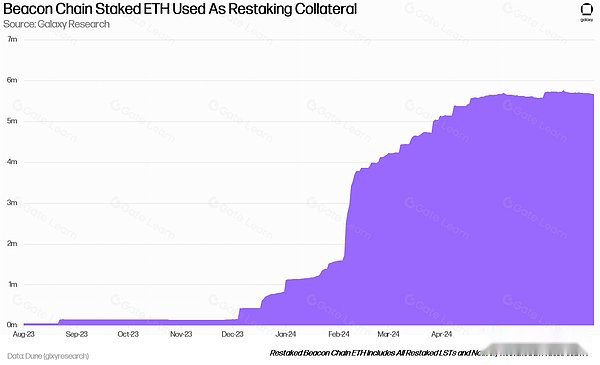
Source: https://x.com/ZackPokorny
(There are currently 33.4 million ETH staked on Beacon Chain (including ETH in the entry/exit queue).)
For users who want to use large amounts of funds to participate but are unwilling to wait for a longer redemption period, they can choose a relatively safe stETH as the participating asset and directly invest in EigenLayer.
For users who want to earn additional benefits, they can appropriately invest part of their funds in projects built on EigenLayer based on their own risk tolerance, such as Puffer, KelpDAO, Eigenpie and Renzo.However, it should be noted that at present, these projects have not yet realized the corresponding withdrawal logic, and participants need to consider the exit risk at the same time and pay attention to the liquidity of relevant LRTs in the secondary market during the investment process.
Monitoring configuration
The projects mentioned currently have the ability to upgrade and suspend contracts, and the project party’s multiple wallets can perform high-risk operations.For advanced users, it is recommended to configure the corresponding contract monitoring system to monitor the upgrade of relevant contracts and the execution of sensitive operations of project parties.
Optimize parameters
Optimize re-collateralization parameters (TVL cap, cut amount, fee allocation, minimum TVL, etc.) and ensure diversification of funds between AVS.The re-pled agreement allows users to choose different risk situations when re-pending the deposit.Ideally, each user can evaluate and choose which AVS to restake without delegating the process to the DAO.
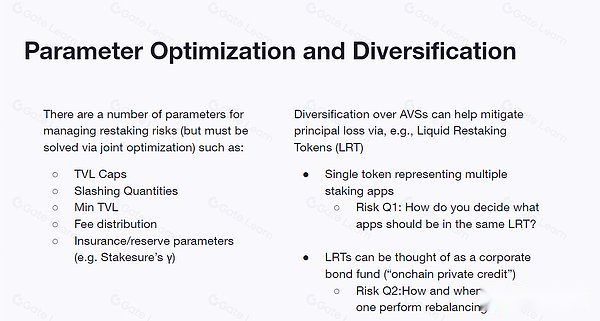
Source: https://docs.google.com/presentation/d/1iIVu6ywaCqlTwJJbbj5dX07ReSELRJlA/edit?pli=1#slide=id.p23
Challenges
From the perspective of application chains, re-staking applications represented by EigenLayer can meet the needs of small and medium-sized application chains to reduce node deployment costs.However, these application chains cannot fully meet their security requirements and the sustainability of their needs is relatively weak.
From a competitive perspective, although the re-pled track has a huge amount of funds, as more and more re-pled applications are launched, the market funds will be dispersed.If the profits of re-staking applications such as EigenLayer decline, for example, when the bear market is sluggish, the application chain demand will sharply decline, will it lead to a fund run?
From the perspective of partners, EigenLayer has developed 14 AVS partners in the early stages.Although AVS may be attracted by potential returns in the early stage, the security risks of the re-staking mechanism may affect the willingness of subsequent AVS operators to join.
From the user’s perspective, users may not be able to obtain rich staking benefits in the short term.Uncertainty in staking yields may have a negative impact on future growth in user numbers.

